South-facing garden ideas: 15 ways to make the most of a sun-filled plot
On the hunt for south-facing garden ideas to transform your outside space? These planting, layout and decor solutions should be just the ticket for sunny spots
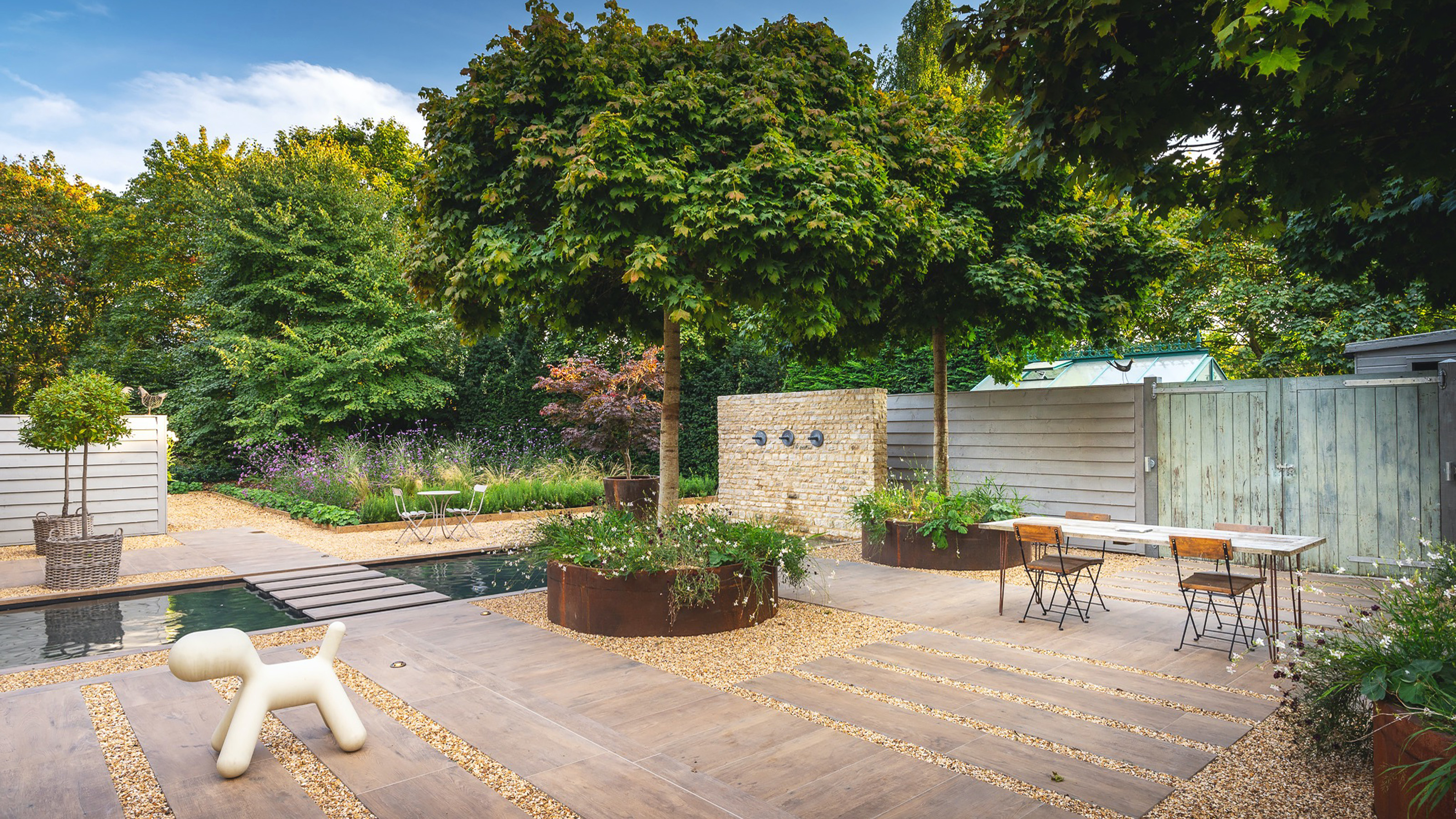

Sun-filled and sought-after, south-facing garden ideas are on everyone’s wish list and our clever solutions will help you make the most of your outside space. From planting to planning, styling to shade tips there’s plenty of inspiration for backyards of every shape and size.
If you live in the northern hemisphere, the beauty of a south-facing garden is the amount of sun it receives. From first thing in the morning until early evening you can sit, relax, and bask in those warm rays.
But how can you perfect your garden layout ideas for this type of plot, plus which plants will grow and thrive in these sun-drenched conditions and just how can you create shade where and when needed? Well, we’ve got plenty of green-fingered know-how and inspiration to help, but also have clever ideas to share on how to take advantage of such a desirable plot.
South-facing garden ideas: 15 looks for your space
From Mediterranean-inspired spaces, stunning planting ideas and clever ways to create shade in a sun-drenched spot, we've brought together some of our favorite south-facing garden ideas below to help you get inspired.
1. Fall for the charms of a gravel garden
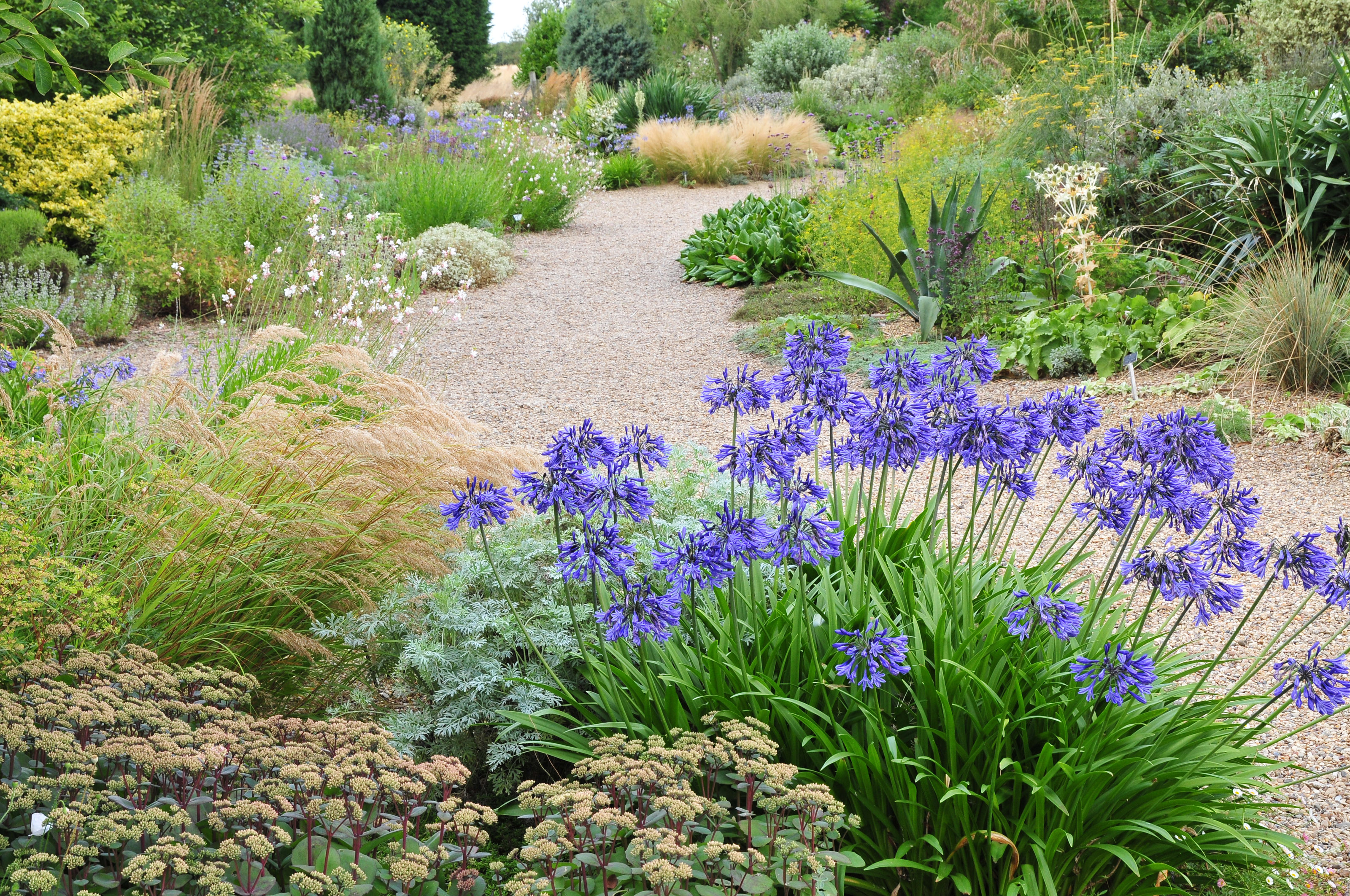
The gravel garden at Beth Chatto Gardens
Garden gravel ideas are ideal if you're searching for practical but pretty south-facing garden ideas. Suitable for sunny, free-draining plots, they are largely low maintenance. Perfect for sprawling ground cover and ideal as the basis for for nectar-rich flowers adored by pollinators, they make inspiring and ever-changing spaces that can cope well with plenty of sunshine and periods of drought.
Gravel is an incredibly versatile material and can be used for everything from your garden path ideas to rockeries, adding interest and texture to all areas of your garden.
At the pioneering Beth Chatto Gardens in Essex, England, gravel gardens form a key part of the layout and planting scheme and have been used to great effect. 'All the plants in this part of the gardens have been selected for their drought tolerance,' explains head gardener Asa Gregers-Warg. 'Gravel paths weave through drifts and asymmetrical groups of perennials and shrubs; annual self-seeders contribute to the natural, relaxed feel and are allowed to fill empty gaps; repetition of color, shape and form helps guide the eye through the planting and ensures harmony, while contrasting colors, shapes and textures bring the different characteristics to the fore and enhance each other.'
2. Position a greenhouse to get the sun
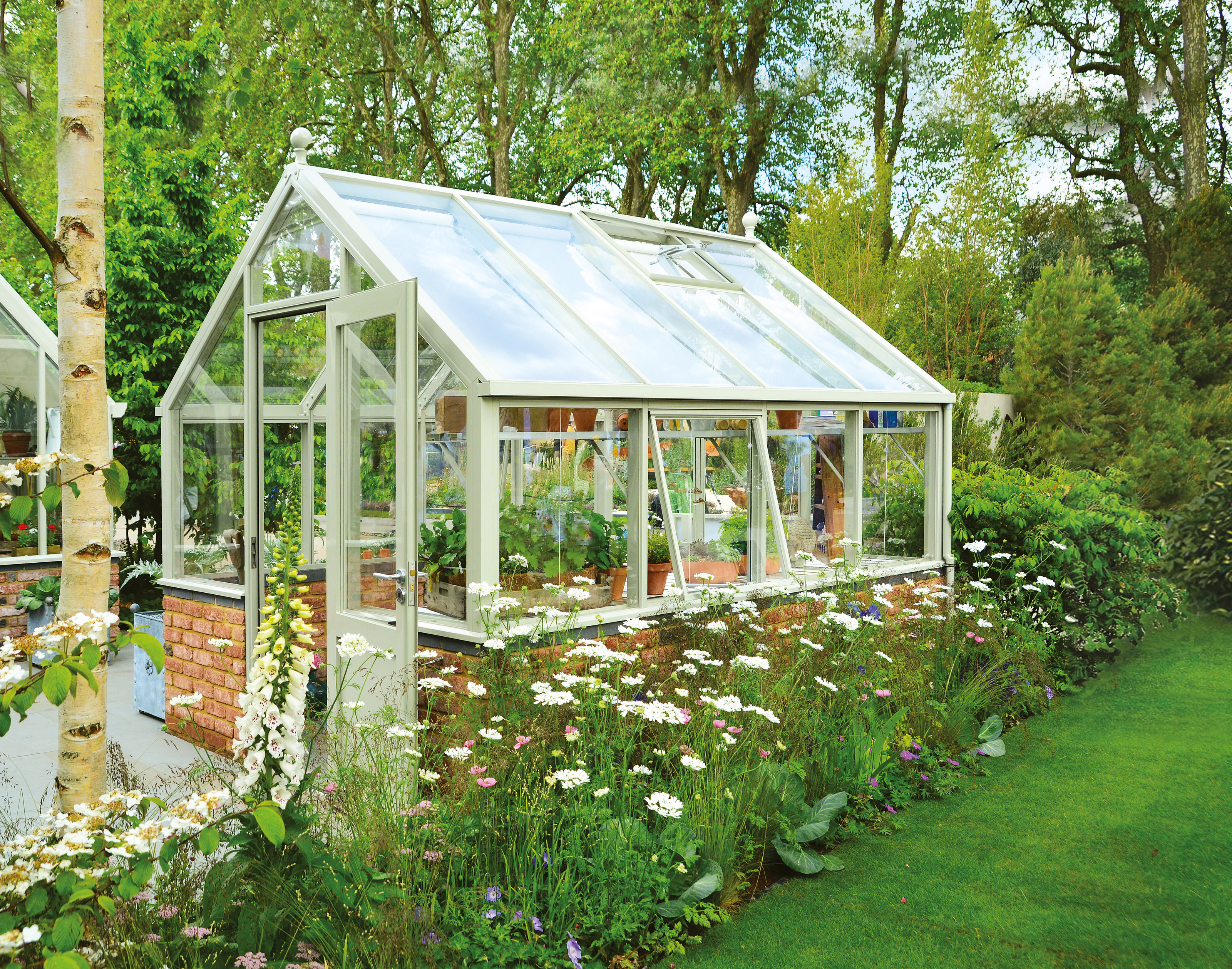
The angle and siting of your greenhouse ideas plays a huge part in how much sun it receives and how well different plants will crop and thrive. A spot to the south of the house is ideal, as the building will bask in the sun most of the day and receive maximum daylight and warmth even during the colder seasons. This is crucial if you wish to overwinter tender plants such as agaves, plumbago and tree ferns.
It can also help massively when growing summer crops. Align the greenhouse ridge north-to-south to provide equal amount of sun on both sides and help reduce overheating too. For lean-to designs and shed-glasshouse combinations, place the glazed area facing south, with a wall to the north for protection.
Not sure what to grow in a greenhouse? Our month-by-month guide has the answers.
3. Nurture a herb garden
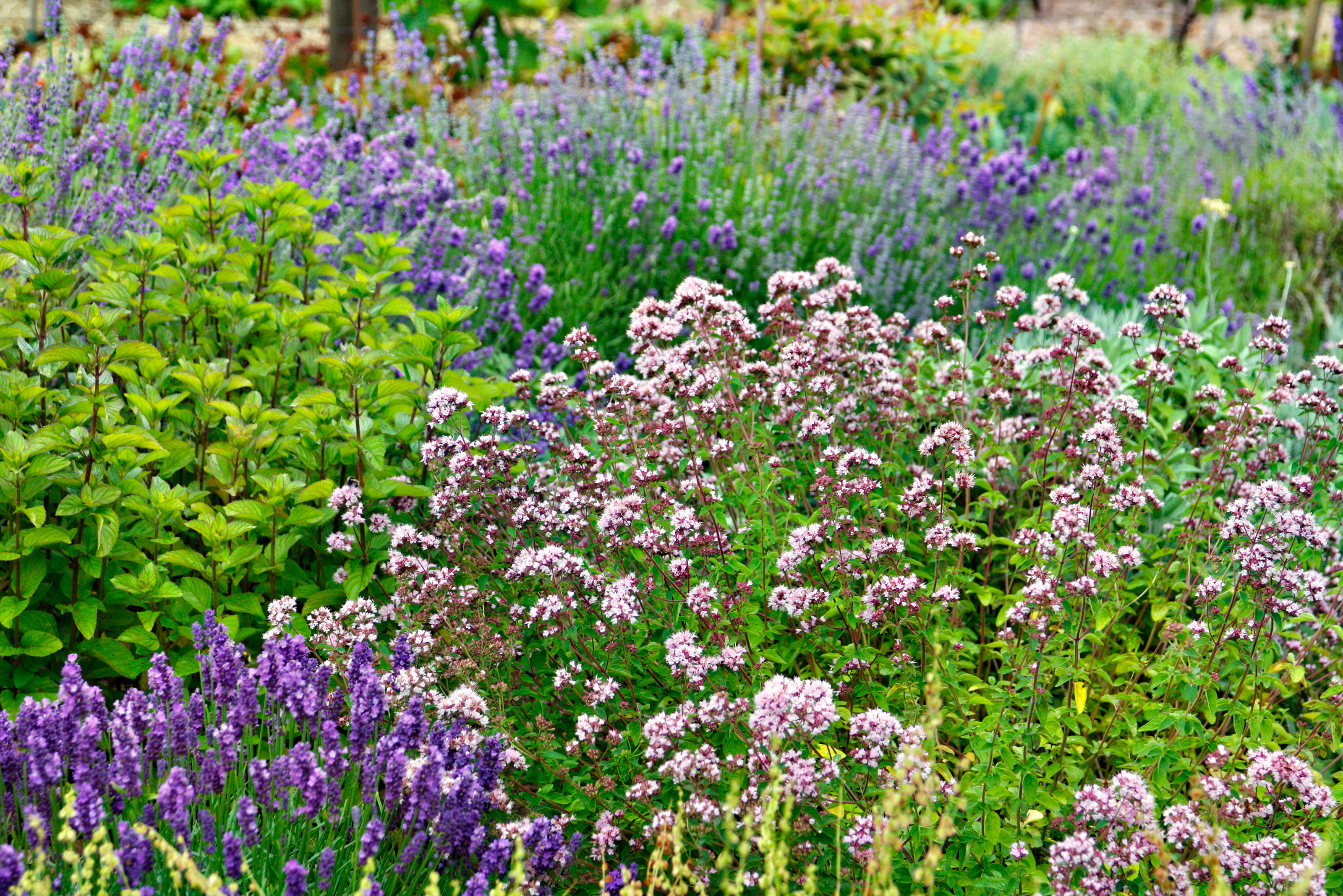
A herb garden filled with marjoram, lavender and mint
Sun-filled south-facing garden ideas are perfect if you're keen to learn how to create a herb garden. After all, what could be more pleasurable than enjoying the scent and sight of these easy-going plants in your own backyard? Most herbs are happy left to their own devices, providing they are in free-draining soil, plus you can enjoy harvesting them and using them in your cooking.
Devoting garden space to herbs is not solely for our benefit either, as herb expert Jekka McVicar of Jekka's herb farm explains, 'I have noticed that gardens are becoming much more natural in style, which is likely a reflection of the increased awareness of our role in nature, the impact of climate change and the rise in the vegan diet.'
4. Dine under a leafy pergola...
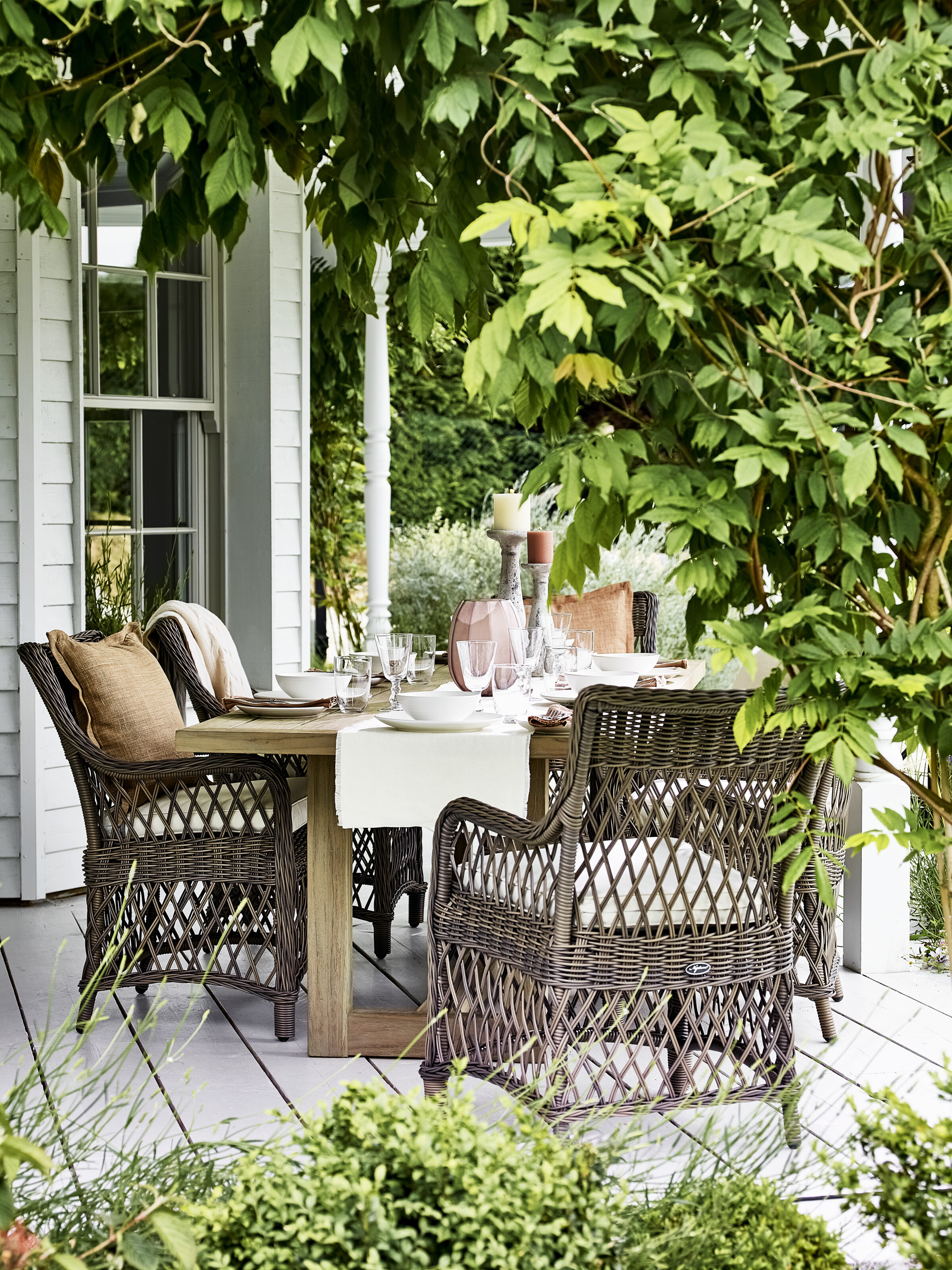
Pembrey table and Harrington chairs from Neptune
Shade is all important in south-facing garden ideas. Blessed with sun for most of the day, these gardens can be scorching hot around midday, so creating a shady escape is essential.
Take a tip from Mediterranean garden ideas and create a cool, leafy-covered dining area to share with friends. A place to kick back and savor delicious food and chilled drinks, it ideally needs to be large enough to fit a dining table, surrounded by comfy chairs and to remain in shadow while the sun moves round.
Sturdy pergola ideas are the simplest framework to erect and can easily be covered with the best climbing plants and vines. Whilst grape vines are the staple choice in warmer climes there are plenty of gorgeous varieties that are happier in cooler, more changeable conditions.
Clematis montana, wisteria and climbing hydrangeas are all fast growing and will provide ample shade as well as beautiful blooms. Once the main cover plant is established, why not introduce some seasonal variety with colorful clematis, honeysuckle and annuals such as Morning glory and black-eyed Susan.
5. ...or plant mature trees for shade
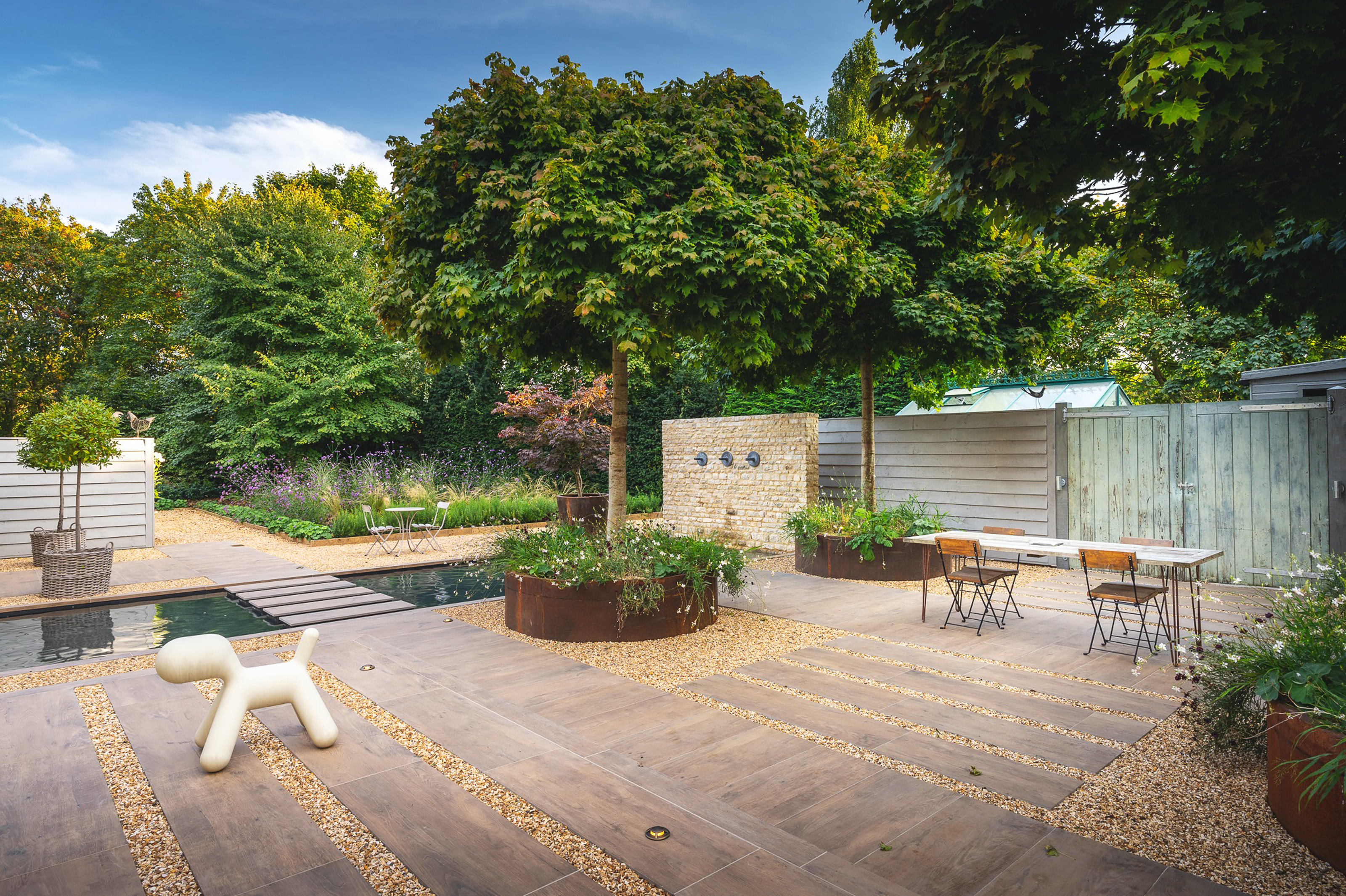
Garden designed by Joanne Alderson Design
Trees are nature’s sunshades and can make enchanting additions to exposed south-facing garden ideas as designer Joanne Alderson explains: 'I decided to introduce mature trees into my own garden as being south facing it can get red hot. The idea of the trees is to create natural shade which looks beautiful, does not get moldy in the way that parasols and sail shades can do, and birds flit in and out as we sit beneath. Being mature they did the job instantly; although they were expensive, I still feel they are definitely worth the cost.'
Weighing well over a tonne each, installing and planting these mature trees was definitely a major project. 'Specialists were employed to plant the trees and they used tele handlers and experience to place them. Each is secured using tensile steel wires and planted in organic compost with a timed irrigation system,' she adds.
Not got the space or budget for large trees like this in your plot? Find something suitable with our guide to the best trees for small gardens.
6. Try growing exotic veg
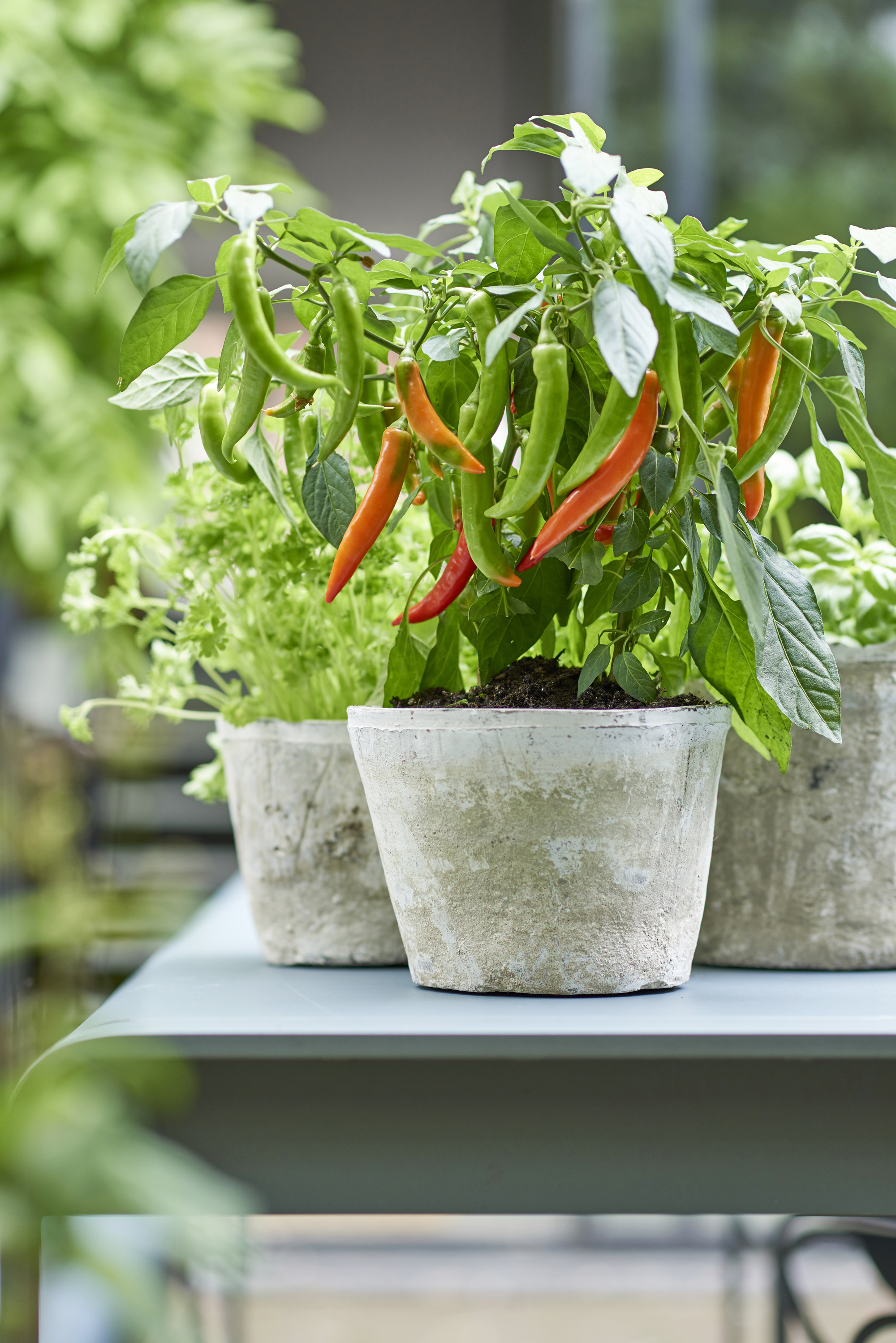
Try growing chilli plants in a pot on your patio
Capitalize on a hot and sunny spot by raising some exotic fruit and vegetables in your south-facing garden ideas. Peppers, aubergines, sweetcorn, snap peas and cucumbers all originate from tropical climes, and given water and nutrients will thrive happily in these conditions.
Tomatoes and peppers do need time to establish and crop though, so it’s best to plant out as well-established seedlings, once any frosts have safely passed.
If you've never considered how to grow chillies, why not add them to your planting list for your kitchen garden ideas this year too? Homegrown chillies are super rewarding to grow, and the longer they grow for the hotter they taste. Highly decorative and coming in a range of bright colors, they will flourish in pots or borders. For best results, pinch out shoots to encourage branching and fruits to set and once these establish, treat them to a weekly dose of high potash tomato fertilizer.
7. Choose the right plants for a south-facing garden
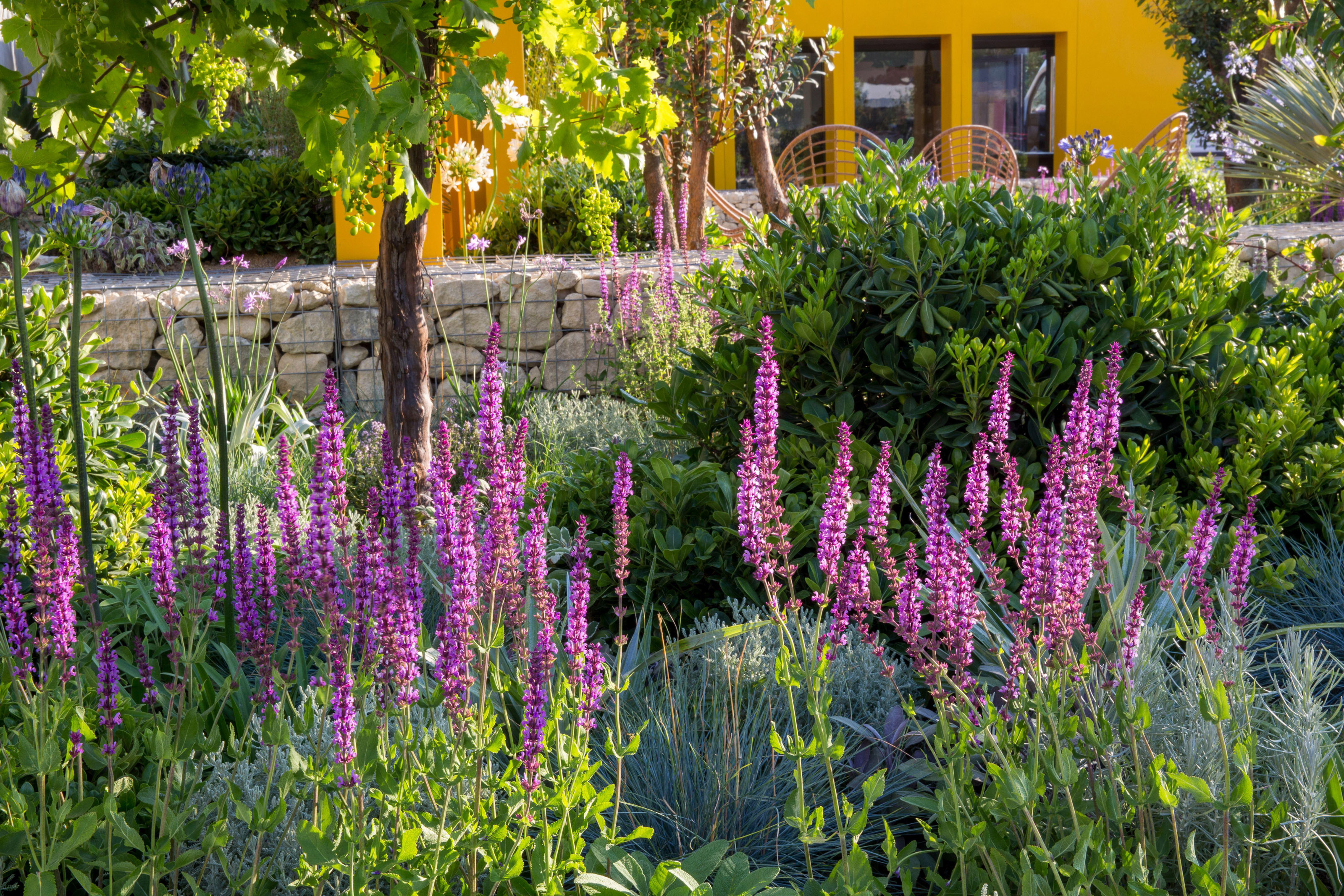
Mediterranean climate garden with drought-tolerant plants and Salvia nemorosa adding splashes of color
Want a plant-filled plot that looks stunning but needs minimal attention? Then take inspiration from those hot holiday travels. Many of the aromatic and colorful plants we savor and love from Mediterranean climates are happy to put down roots in our south-facing garden ideas. Here are some of our favorites:
- Salvia nemorosa, common name Woodland Sage Tall spires of long-lasting tiny blue flowers. It has a high nectar production so bees and butterflies will love it too.
- Verbascum, common name mullein Yellow flowering towers are the norm, but lesser-known shades of dusky pink, cream, lavender, apricot and purple are worth seeking out.
- Lavender Unbeatable for fragrance, flowers and year-round foliage. You can find out how to grow lavender in our guide.
- Agapanthus White, blue or purple mop-headed blooms atop of slender stems. Learn how to grow agapanthus and you'll soon realize they thrive in tight spaces and make a spectacular statement in any plot.
- Agave americana Spiky and drought tolerant, these sculptural beauties will add drama and form to pots and sunny borders. Add gravel to the soil before planting and shelter with horticultural fleece in cold, wet weather to protect plants from frost.
- Echium pinnifolium Also know as or Giant Viper’s Bugloss, this reaches up to an impressive 3.5m high. These towering giants will attract attention from both visitors and pollinators.
8. Feast on soft fruit
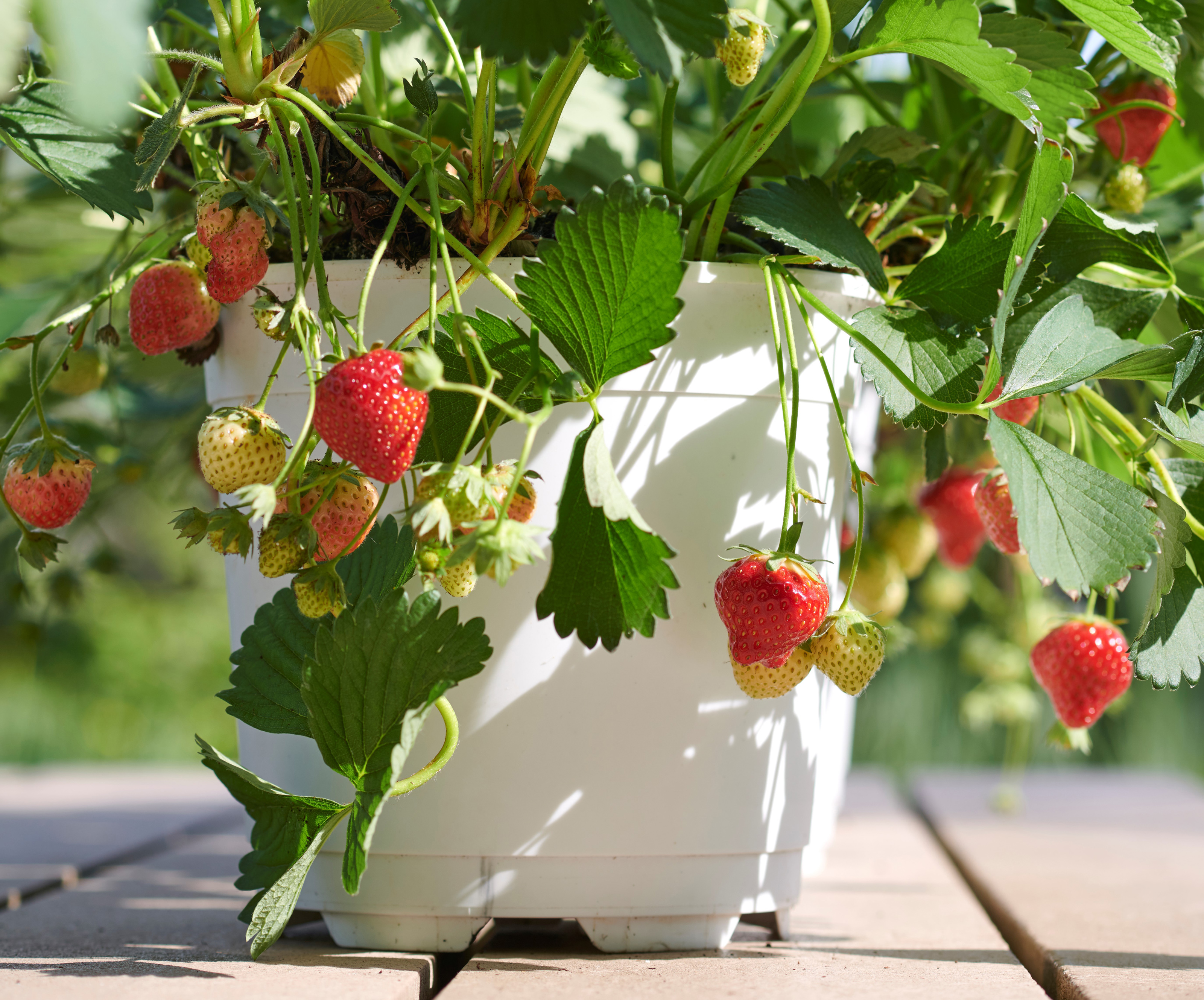
Strawberries are easy to grow in a sunny spot
If you're lucky enough to have a warm, sunny plot or patio then make some room for fruit trees and bushes in your south-facing garden ideas. Blueberries, strawberries, blackcurrants and blackberries can all be raised very easily and produce supremely tasty crops too. These plants don’t need to take up much space either, so are a brilliant option if you're interested in growing fruit in pots.
'With gardens becoming smaller there is more demand now for fruits that can be grown in containers,' says Jon Munday, Nursery Manager at Blackmoor Nurseries. 'Like the new Raspberry Yummy that has been bred with this in mind.' But don’t think that berries and fruit bushes are your only option either. 'The main trend for fruit trees is the trained espalier and fan shape trees as these can be planted against garden wall ideas or a fence and take up very little space,' he adds.
Our guide on the best fruit trees to grow in pots has plenty more suggestions for you to try.
9. Give prairie-style planting a go
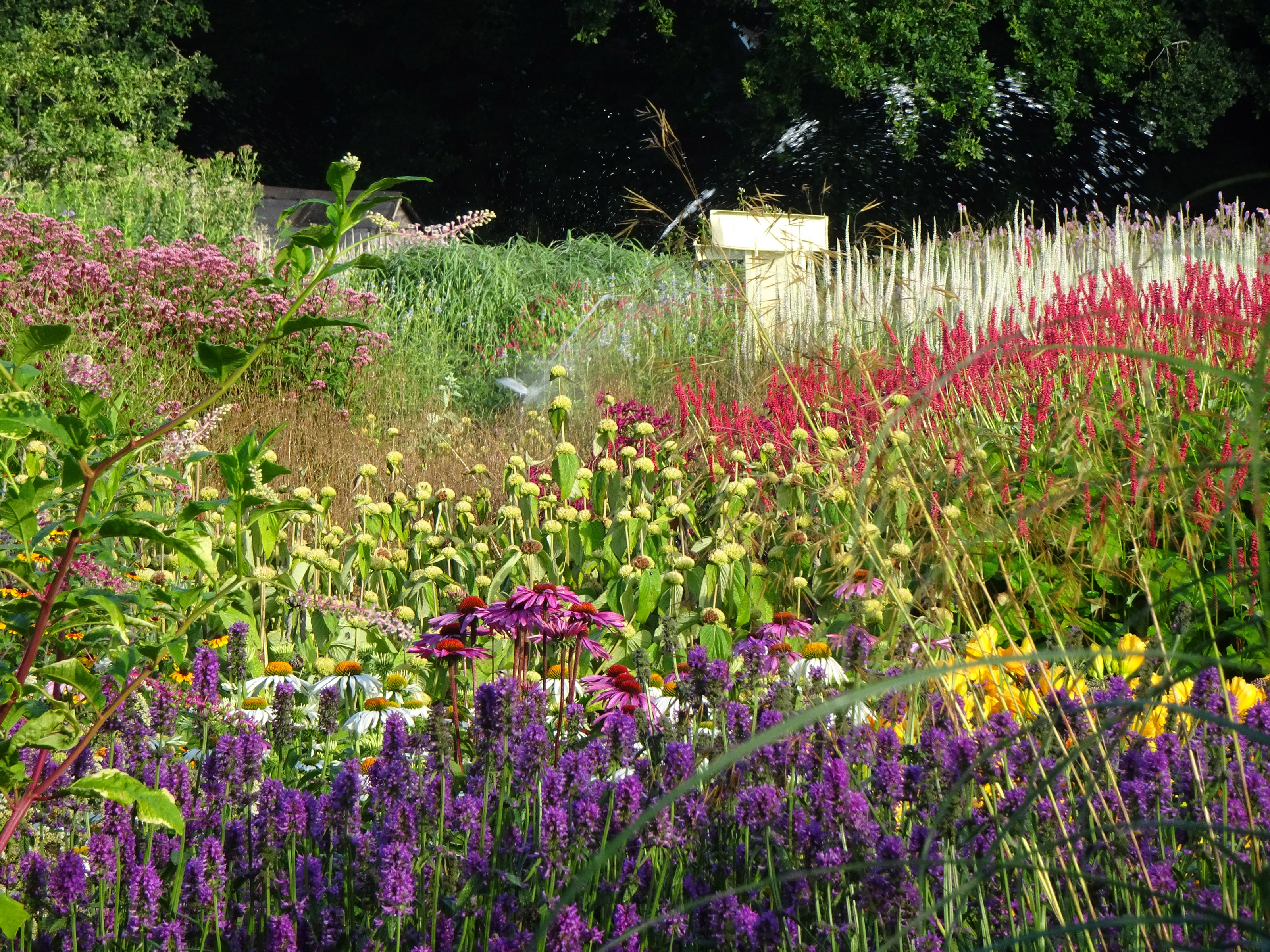
This prairie-style garden is packed with grasses and perennials
If you love plants and laid-back style, then take inspiration for your south-facing garden ideas from the dreamy prairie style of planting. Seas of swaying ornamental grasses and flowers, interwoven with pockets of color and texture form a beautiful, ever-changing scene that can be successfully scaled down from vast large garden ideas to a single border in smaller spaces.
10. Bring your plot alive with a water feature
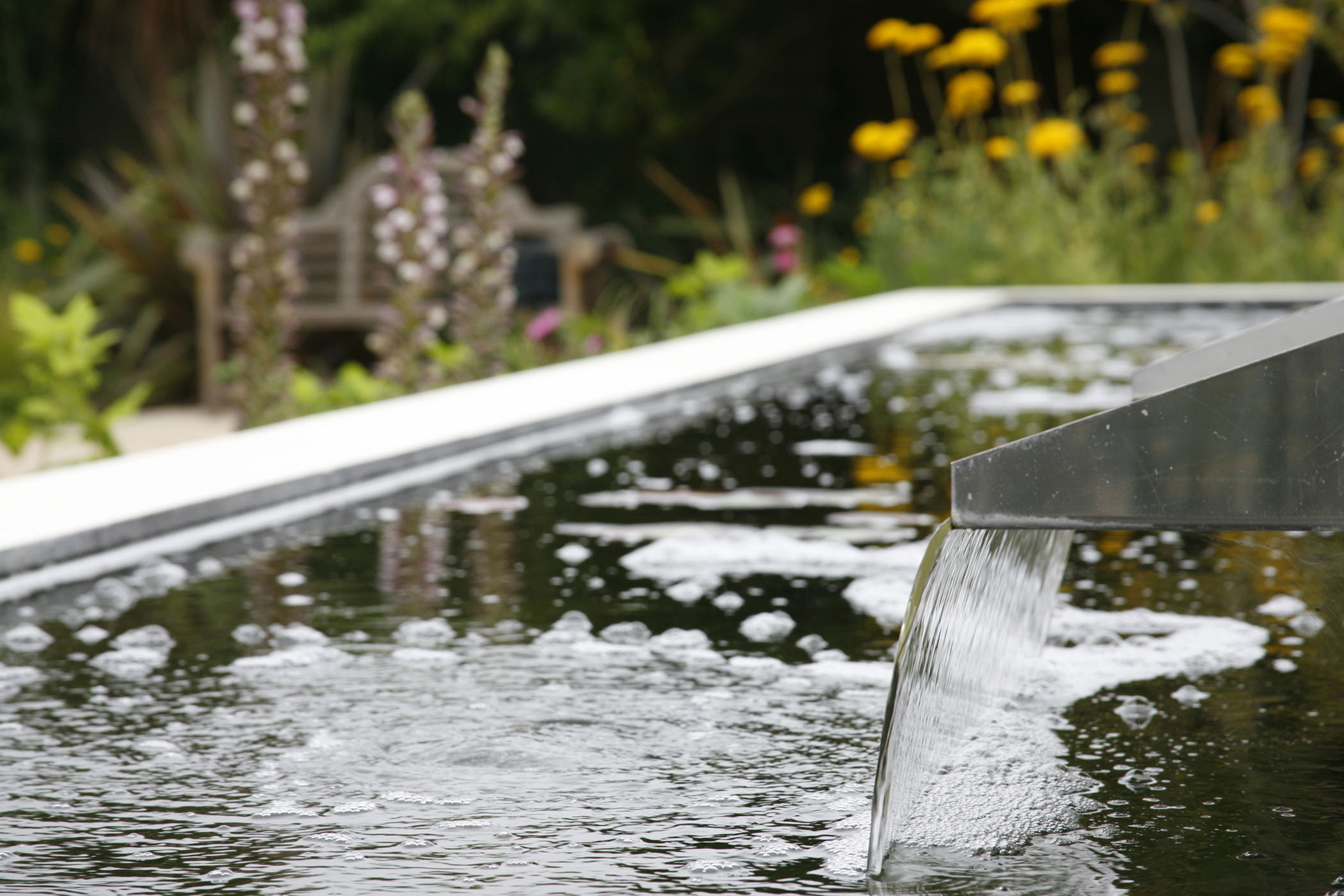
A striking water feature is a lovely addition to a south-facing garden
Whether it’s moving or still, water is a great way to inject life into an outdoor space, particularly when the sun can bounce and reflect off the surface. There are endless ways to use water feature ideas in the garden and each can bring a different quality.
Large shallow water bowls cast a calm and tranquil air with their expansive reflections. Place them in the center of paving or mount them on a simple plinth, sit back and admire the surroundings and the scudding clouds overhead.
For a more dynamic effect, a straight-sided rill filled by water falling over a water blade is a contemporary look for garden pond ideas. As shown in this project, the strong, clean lines make a stunning contrast to natural, loose planting, instantly adding structure and drama.
Wall-hung fountains, babbling water tables and tumbling water walls are other stylish options, all will add varying degrees of movement and sound without taking up large amounts of space.
11. Add coastal touches to a sun-filled spot
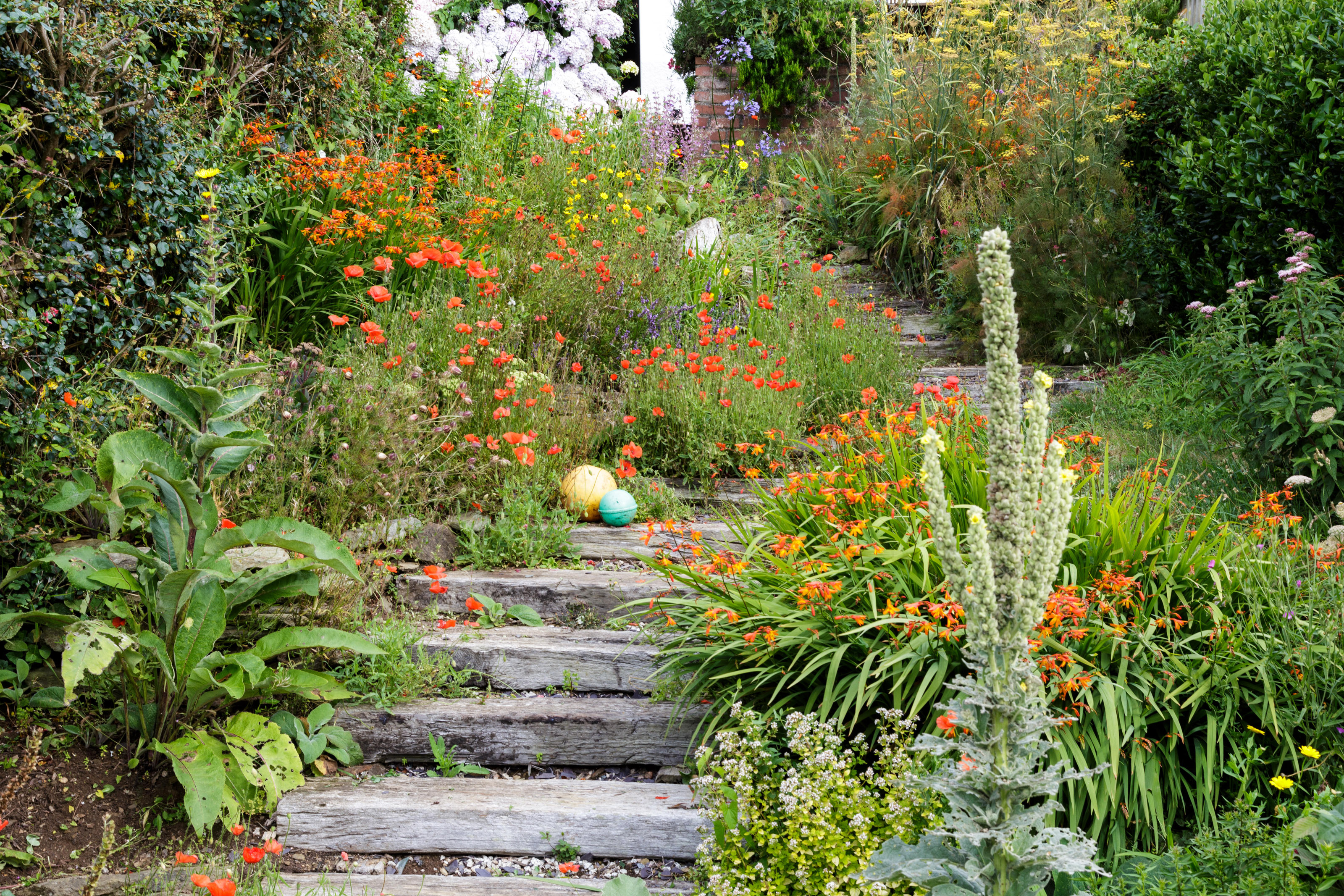
Railway sleeper steps give this south-facing coastal garden added interest. It's planted with wildflowers and annuals for a more natural look
Capitalize on a light and sunny garden by introducing some mood-boosting seaside style to your south-facing garden ideas. With their distinct planting and array of distressed and worn natural materials, these character-filled spaces ooze laid-back charm and make a bold visual statement all year round.
Many coastal plants tend to have thin strappy leaves leaves – such as Crocosmia, Sea Thrift or marram grass – to help cope with the exposed and salty conditions. They also happen to look spectacular next to silver-leaved beauties such as sea kale, eryngium and vibrant valerian, that are often found along pebble beaches and shorelines. Plant in distinct clumps, nestle in free draining, gravelly soil and allow to self-seed freely for a natural and informal feel.
Chunks of driftwood – smoothed by sand or deeply grooved by the elements – make perfect statement structures. Look for ways to incorporate them into your design. Steps, decks and raised garden bed ideas are impressive but do require substantial amounts of timber. Instead opt for edging beds, framing gates and doorways or a series of standing monoliths within garden borders or gravelled areas.
12. Make the most of solar power
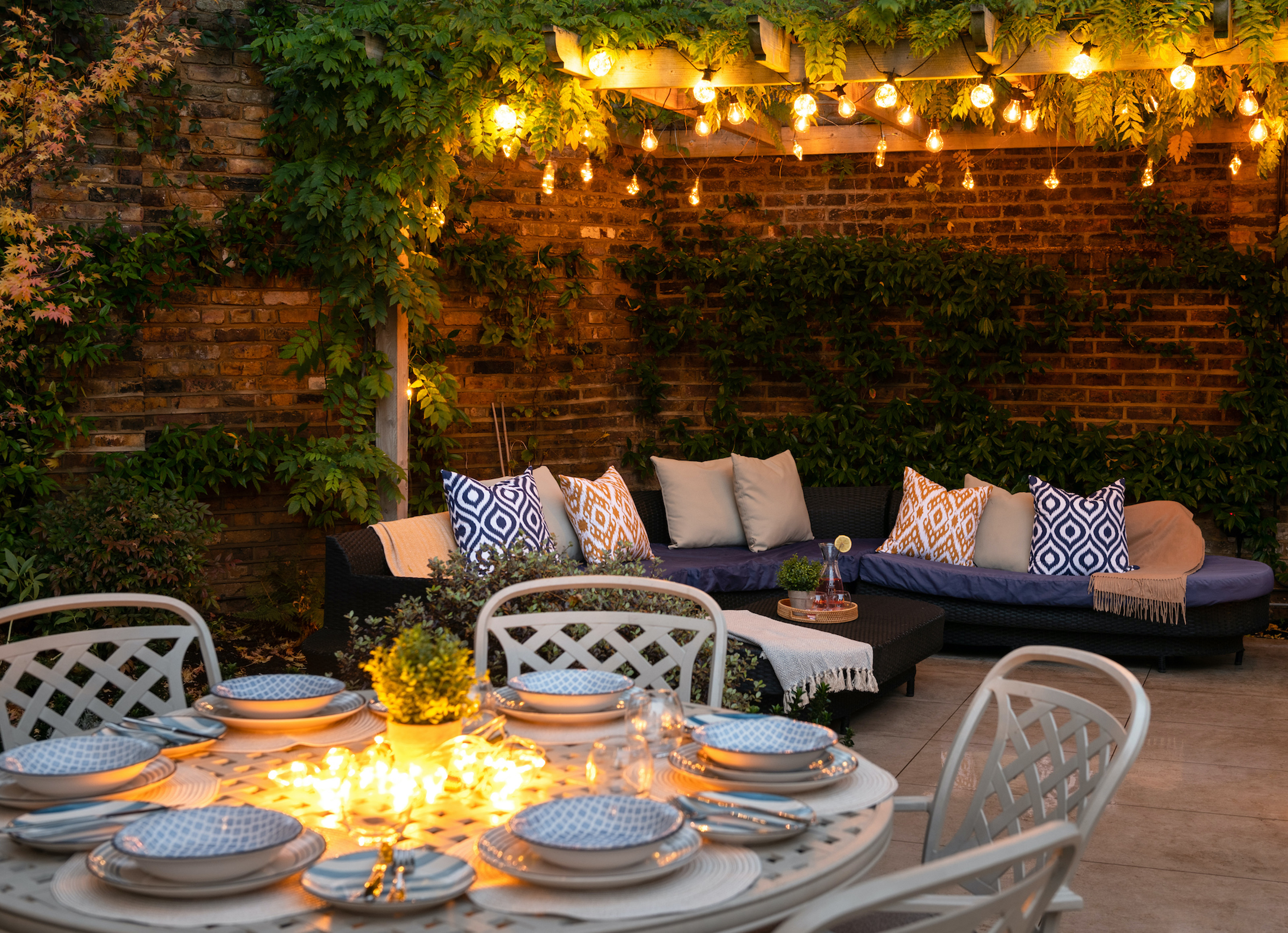
With south-facing gardens receiving the most sunlight, it makes sense to harness the energy with solar-powered features. Water features and outdoor lighting ideas are two obvious uses, and include everything from floating fountains, freestanding cascades to wall-hung fountains.
Solar lighting options are not just limited to decorative festoon light ideas and fairy lights, but deck lights, drive and path markers and pond lights too.
There are numerous, less obvious uses for solar power in the garden too. Irrigation systems are one, and these include an energy control panel, battery and pump which can be set up to take water from a water butt through a series of drippers or seeper pipes to water pots, baskets and borders.
Solar panels can also be added to your shed ideas to power lights and radios, but the exciting prospect for the future lies in solar glazing. Currently a costly investment, it works by harvested energy directly from the glass – ideal for greenhouses – and converts it into useful power that can be used for heating crops and raising seedlings.
13. Optimise the shadows
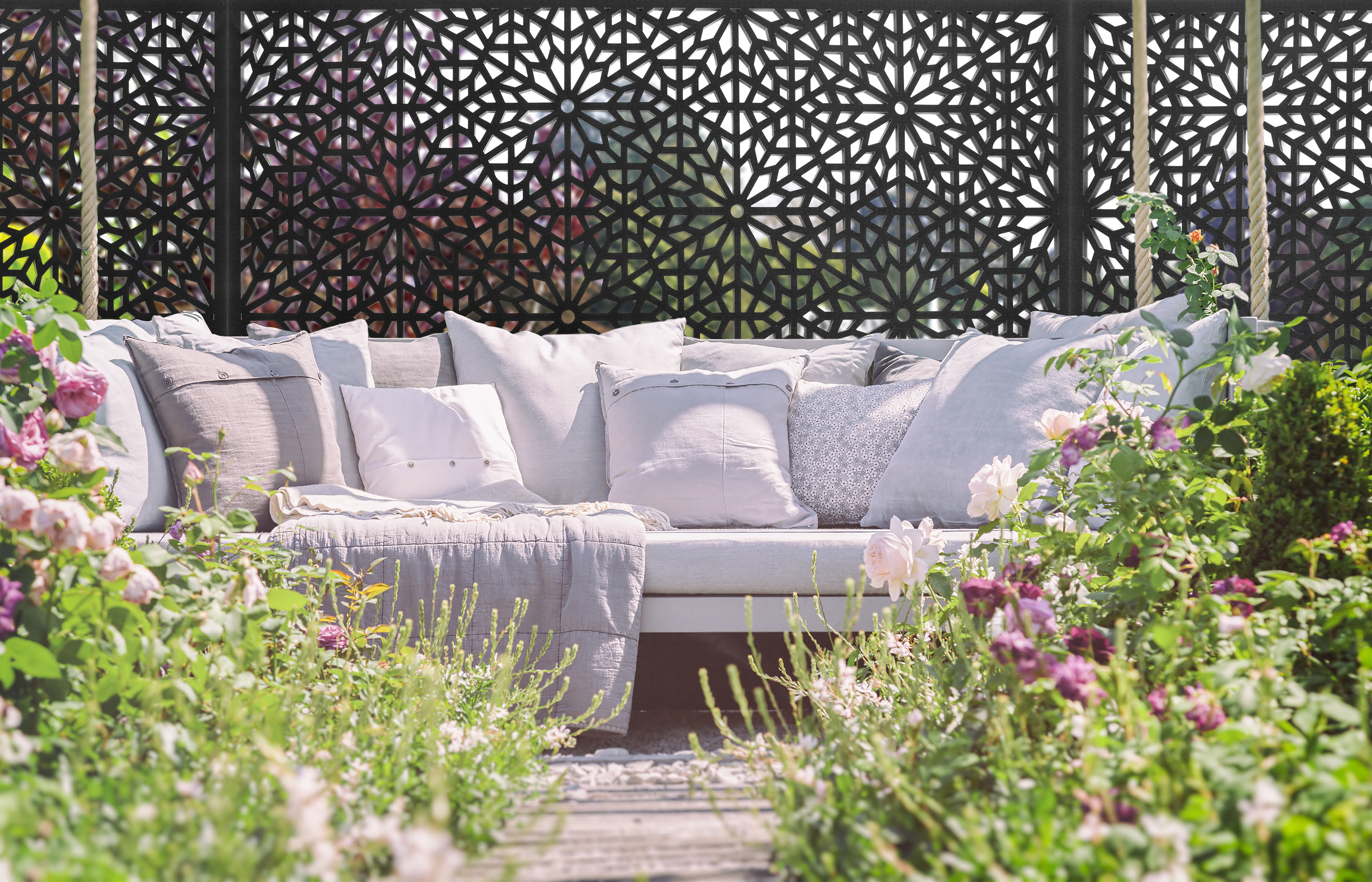
Fretwork screens make eye-catching garden features in any space, but the beauty of using these cutwork pieces in south-facing garden ideas is the ever-changing shadows they cast.
Whether used to create garden privacy ideas or as a way of elegantly breaking up the space in long garden ideas, they will let light filter through and can add pattern and interest as subtly or dramatically as you wish.
Choose from small scale, repeated patterns to run across the top of fencing panels to form a narrow band of interest or go for full-height, freestanding panels with large individual motifs or staggered designs to create a sense of movement across the space.
14. Grow sun-loving grasses for movement and texture
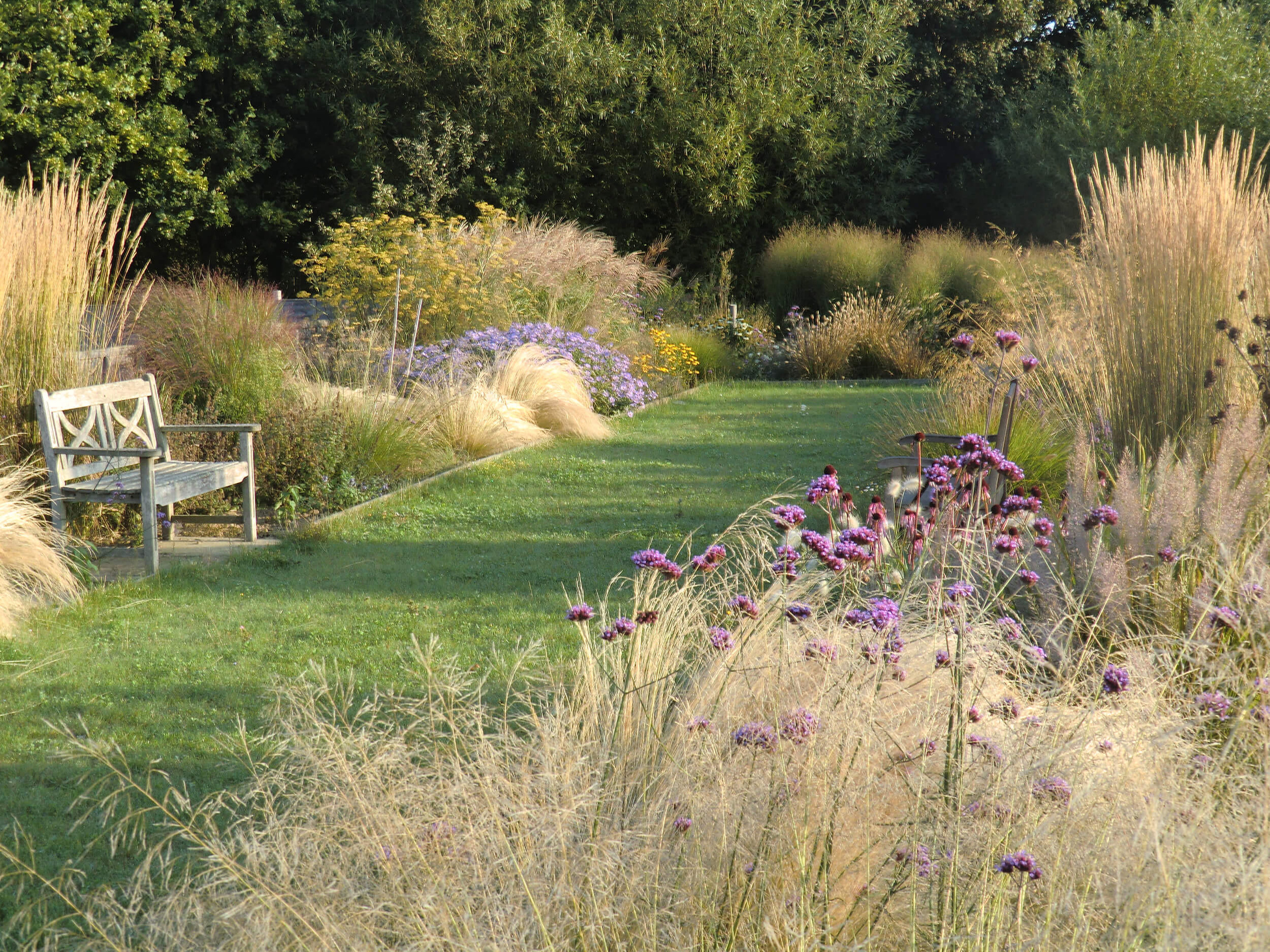
Ornamental grasses will add height and interest to sun-drenched garden borders
Looking for plants that will look good and thrive in a sunny spot? You can’t beat ornamental grasses. Adding height, graceful movement and a soothing rustle in a breeze they are surprisingly easy to look after and, if you plan well, can provide interest all year round. Used either side of a lawn like in the above space, they can be a striking choice for garden edging ideas too.
Choose from evergreen beauties such as strappy carex, spiky festucas and light and feathery deschampsia or theatrical perennials such as miscanthus with tall brown silky tassels or Panicum virgatum 'Northwind' with its green-grey foliage fading to orangey yellow in Autumn.
Don't forget, you can find tons of expert tips on how to grow ornamental grasses in our guide.
15. Harness the heat with your decor ideas
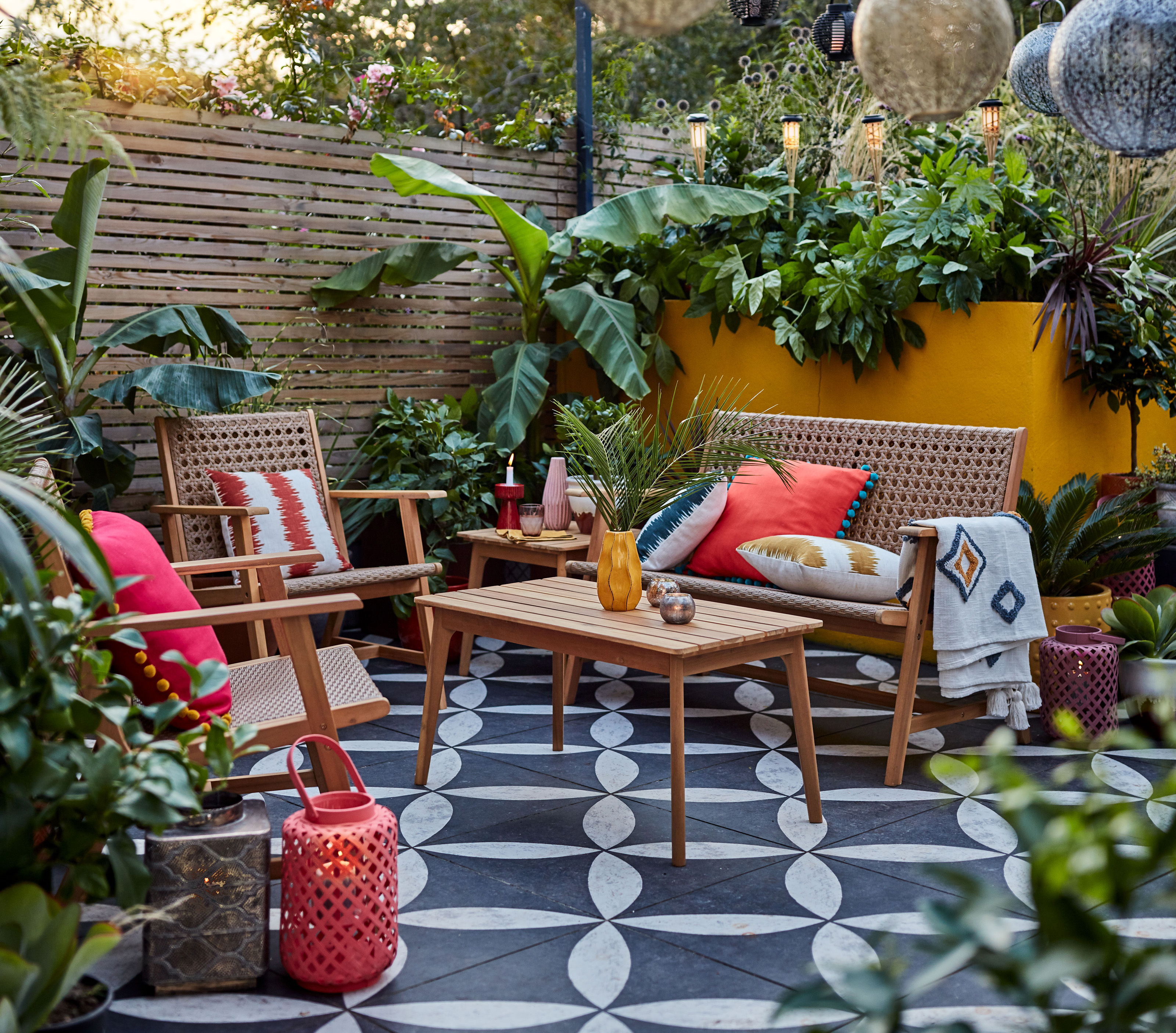
Need to spice up your patio ideas? Be bold with your styling and team beautiful wooden furniture with a strong pattern, hot colors and large, luscious foliage for seductive Moroccan style.
This space shows how to get the look just right, but do tweak the ingredients to add your own flair. These mono outdoor tiles with petal design make a lively but not too fussy backdrop for the mix of wood garden fence ideas and eye-catching ochre wall.
For plants, aim for those with large, glossy green leaves such as fatsia, banana plants, chusan palms and phormiums. Consider moving large pot plants outside during warm weather to add to the lush feel and pile on the throws and cushions for extra luxury.
What can I plant in a small south facing garden?
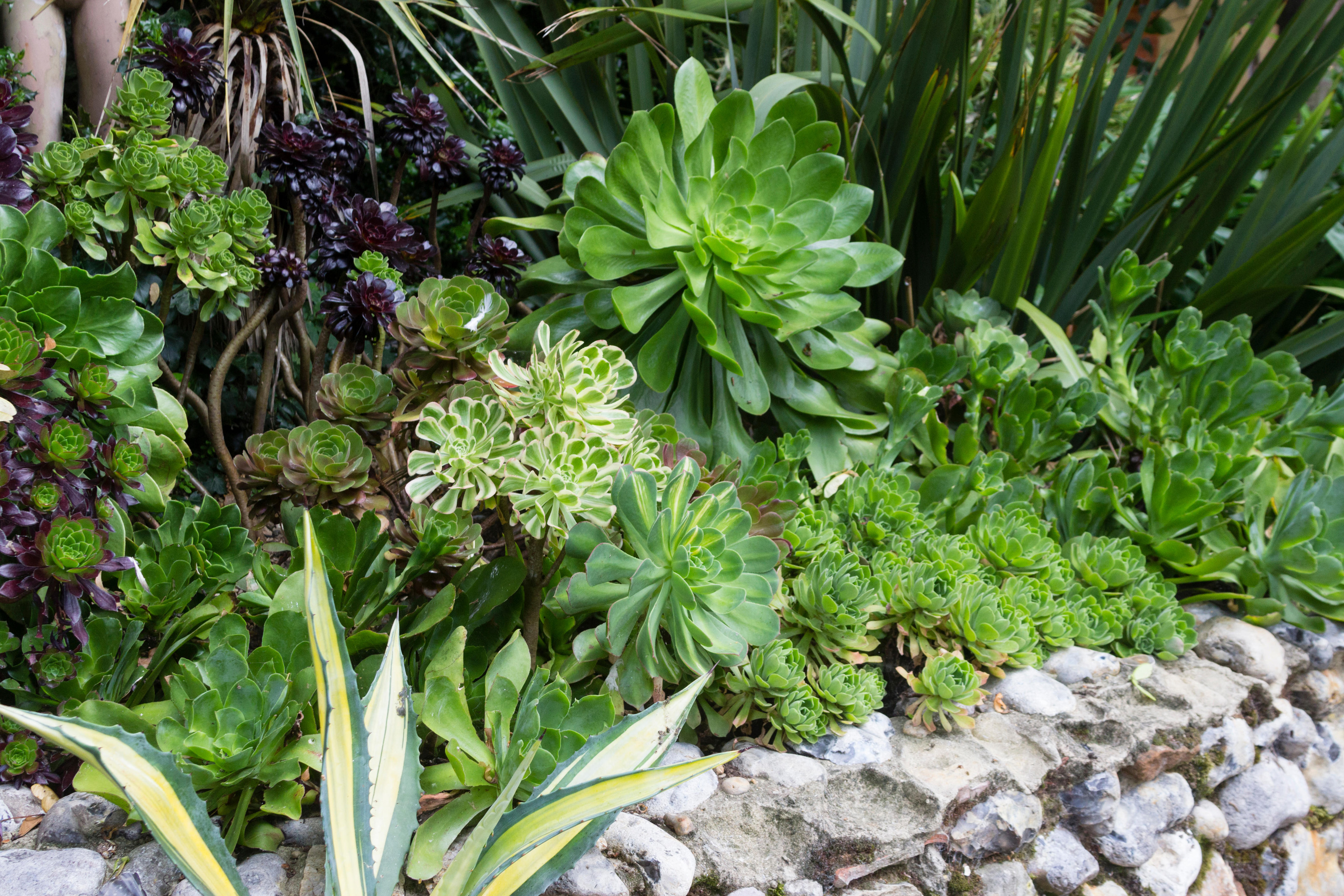
Aeonium arboreum varieties planted in a border create an exotic vibe in this small south-facing garden
Succulents and sedums are perfect for small borders in south-facing garden ideas. Their sculptural shapes and arrange of colors – from deep burgundy, rust red to fresh green and white stripes will add plenty of interest to small garden ideas.
Aeoniums are spectacular for their tall and unusual freeform shapes, sporting fleshy rosettes at the end while tiny stonedrops dazzle with their silver leaves and gold flowers.
Sempervivums or houseleeks grow happily with little soil or root system, making them handy for covering paths, gravel and brickwork, while larger sedums – now known as hylotelephium – add height and bulk to borders and gravel gardens, providing valuable nectar for pollinators late into the year too.

Jill puts her love of plants and all things garden related down to the hours spent pottering around with her Nan and Grandad when she was little. Today she is lucky enough to have a garden of her own in Surrey, England, and spends much of her time writing about them too.
